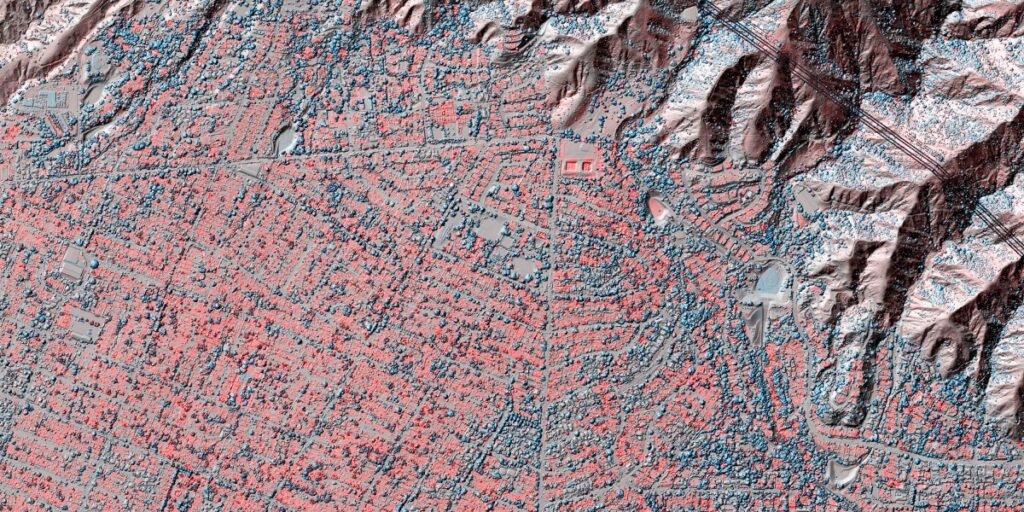“They give us a lay of the land,” he says. “This is what a particular region has been like at this point in time. Now, if you have consecutive flights at a later time, you can do a ‘difference.’ Show me what it looked like. Show me what it looks like. Tell me what changed. Was something constructed? Something burned down? Did something fall down? Did vegetation grow?”
Shortly after the fires were contained in late January 2025, ALERTCalifornia sponsored new lidar flights over the Eaton and Palisades burn areas. NV5, an inspection and engineering firm, conducted the scans, and the US Geological Survey is now hosting the public data sets.
Comparing a 2016 lidar snapshot and the January 2025 snapshot, Cassandra Brigham and her team at Arizona State University visualized the elevation changes—revealing the buildings, trees, and structures that had disappeared.
“We said, what would be a useful product for people to have as quickly as possible, since we’re doing this a couple weeks after the end of the fires?” says Brigham. Her team cleaned and reformatted the older, lower-resolution data and then subtracted the newer data. The resulting visualizations reveal the scale of devastation in ways satellite imagery can’t match. Red shows lost elevation (like when a building burns), and blue shows a gain (such as tree growth or new construction).
Lidar is helping scientists track the cascading effects of climate-driven disasters—from the damage to structures and vegetation destroyed by wildfires to the landslides and debris flows that often follow in their wake. “For the Eaton and Palisades fires, for example, entire hillsides burned. So all of that vegetation is removed,” Kuester says. “Now you have an atmospheric river coming in, dumping water. What happens next? You have debris flows, mud flows, landslides.”
Lidar’s usefulness for quantifying the costs of climate disasters underscores its value in preparing for future fires, floods, and earthquakes. But as policymakers weigh steep budget cuts to scientific research, these crucial lidar data collection projects could face an uncertain future.
Jon Keegan writes about technology and AI, and he publishes Beautiful Public Data (beautifulpublicdata.com), a curated collection of government data sets.


